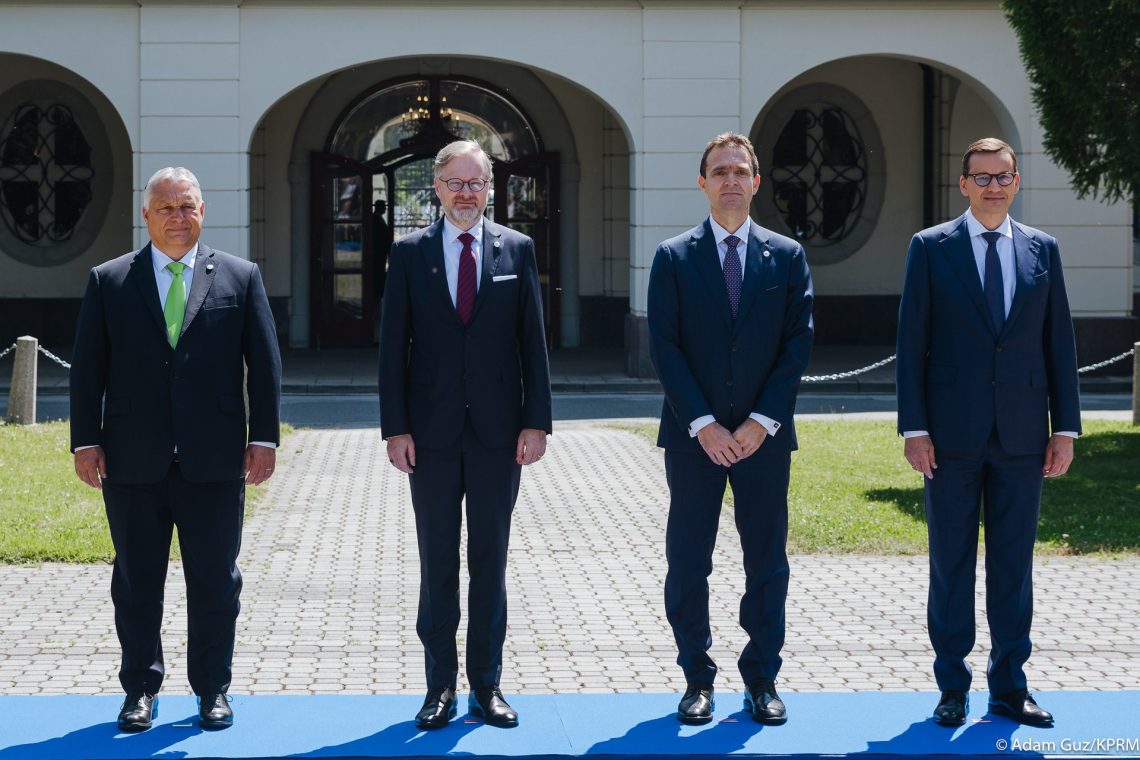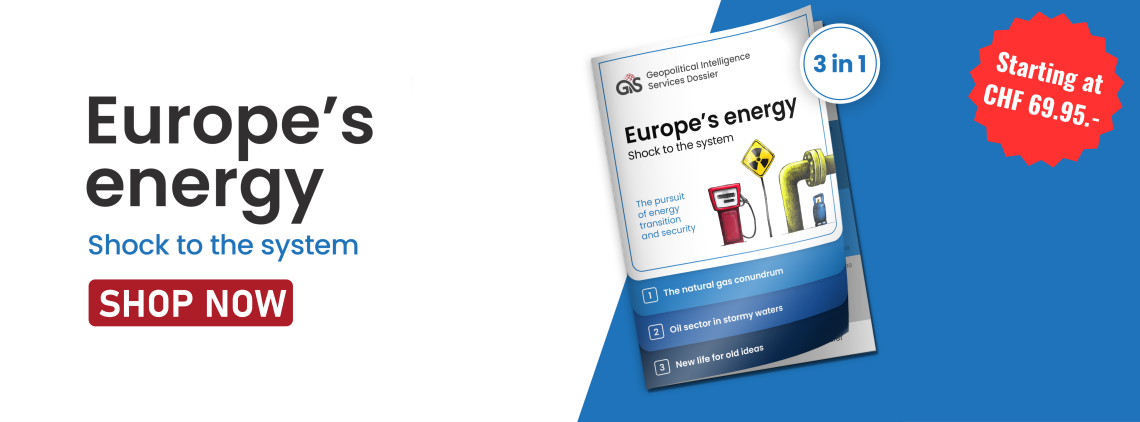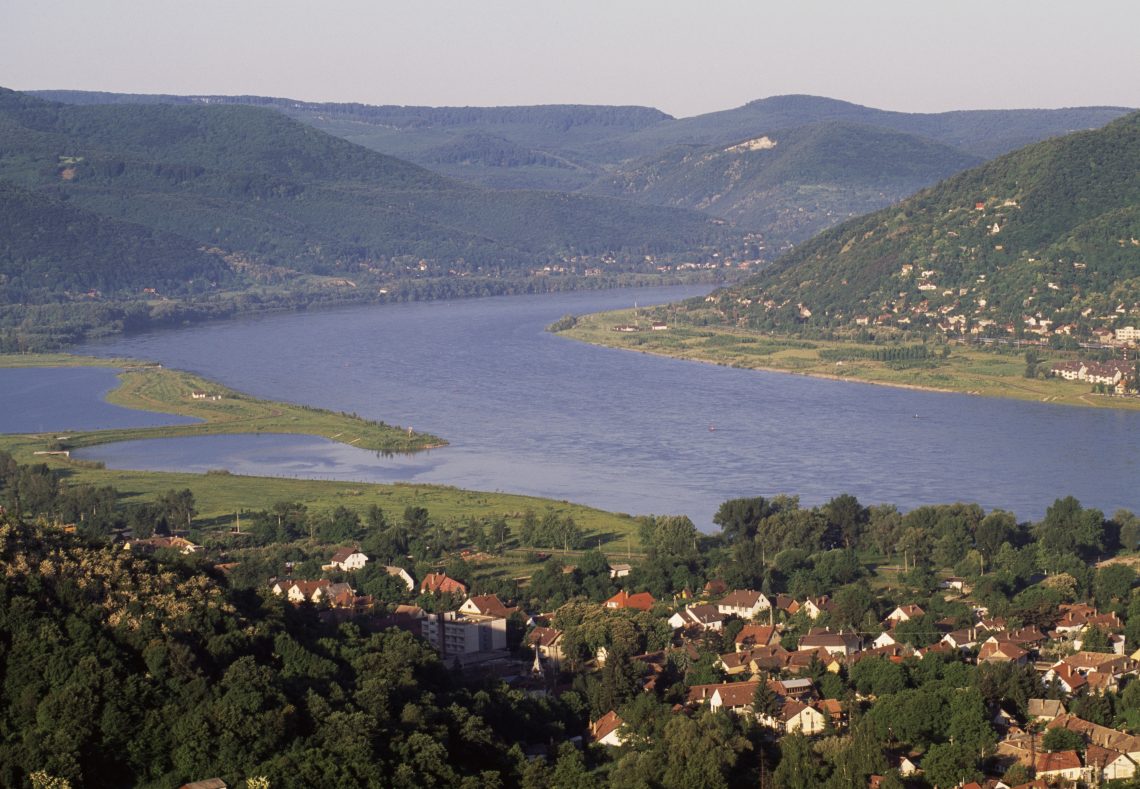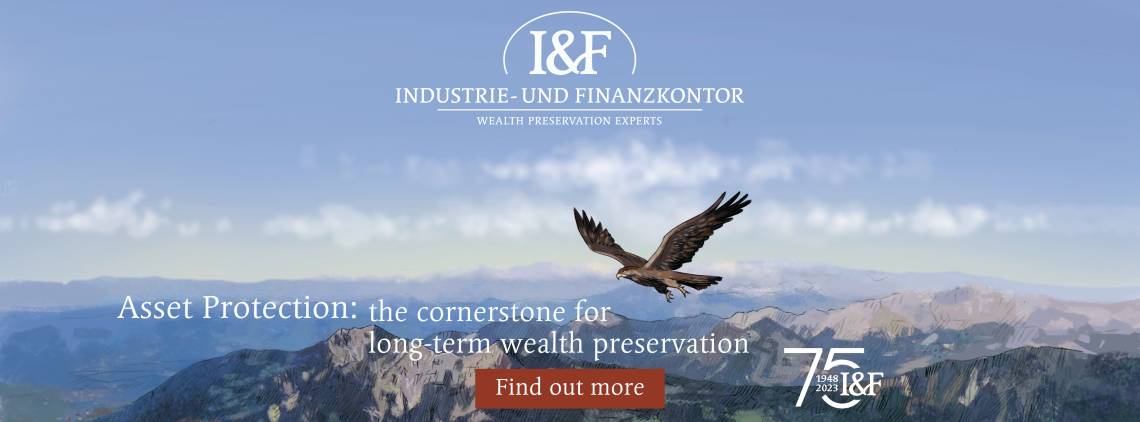Visegrad 4 is limping along
Foreign policy differences among Hungary, the Czech Republic, Slovakia and Poland have reduced the clout of the Visegrad 4.

In a nutshell
- The death of the Visegrad 4 is greatly exaggerated, but it is not what it was
- Hungary, which led the bloc’s formation, gets most blame for its decline
- Sharp disputes over Russia and European Union policy will likely persist
The Visegrad 4 in 2023 is much diminished, a victim of significant political differences among member states Poland, the Czech Republic, Slovakia and Hungary. The grouping was a budding political force when the farsighted founding presidents of Hungary, Poland and the former Czechoslovakia established it in February 1991.
Visegrad, where it was launched, is a charming, picturesque town on the Danube Bend north of Budapest. The three Central European leaders chose the symbolic location where the kings of Poland, Hungary and Bohemia formed an alliance in 1335 to advance their economic interests vis-a-vis Vienna. The aim of the modern-day regrouping was to prepare their countries for NATO and European Union accession and to support each other in areas like defense, energy, the economy and culture as they transitioned away from communism and Soviet domination.
More by Matt Boyse
Breaking the German-Polish deadlock
Germany remains in denial over its Russia policy
From coordinating objectives to managing differences
For over a quarter of a century, the Visegrad format functioned relatively well, with a rotating annual leader and regular meetings at the presidential, prime minister, foreign minister, defense minister, parliamentarian, V4+ and other formats. Member states endowed the association with a strong identity and collaborated closely on issues of common interest. Cooperation with Slovakia within the V4, as it came to be known after the Velvet – or as some Slovaks say, Sandpaper – Divorce with Czechoslovakia in 1993, suffered under populist Prime Minister Vladimir Meciar in much of the 1990s. But even then country goals aligned regularly, culminating in NATO accession for Poland, the Czech Republic and Hungary in 1999, Slovakia in 2004 and EU accession for all four countries in 2004.
Since joining NATO and the EU, the V4 has become a noninstitutionalized framework for all sorts of regional collaboration. The V4 has broadened its focus and now meets with some regularity in numerous additional formats: mayors; embassies; university rectors; think tanks; interior, transport, and energy ministers; parliamentary agricultural committees; and many others. In a declaration celebrating the 30th anniversary in February 2021, V4 prime ministers updated their priorities, which are now: 1) society, economy and innovation; 2) environment, energy and transport; 3) internal and external security; and 4) international cooperation and solidarity. On foreign policy, the prime ministers expressed interest in shaping and advancing EU foreign and security policy – for example, on EU and NATO enlargement, Euroatlantic integration for the Western Balkans and engaging with Eastern Partnership countries. But there was never a shared V4 foreign policy, nor has the grouping been homogenous.

The V4 maintains a secretariat in Bratislava to coordinate programs in education, culture, sports, journalism, tourism and youth mobility, environment, research and development, science and technology, professional development, entrepreneurship, patents and others financed by the International Visegrad Fund (IVF). Founded in 2000, the IVF has financed more than 6,000 projects with a budget of about 10 million euros per year that leverages support from donors like Canada, Germany, Korea, Switzerland and the United States. It functions in a technocratic manner, operating relatively undisturbed by political differences between governments. These sectoral activities have reinforced the V4 as a recognized brand, even if observers often overestimate its role.
While the V4 was never a monolithic bloc, and member states differed on ideology and priorities, they generally agreed on broader security and economic objectives and managed divisive issues. Member states revived the V4 relatively quickly after it lapsed in 1994 because of a lack of Czech interest. It also eventually overcame major differences during the Meciar period in Slovakia. V4 member states had similar views during much of the 2015 migration crisis, even as the Platforma Obywatelska government in Poland later moved away from the V4 position and was critical of the Viktor Orban government over the Hungarian prime minister’s approach to the EU and issues like the rule of law and social policy.
Indeed, the V4 was at its most influential since NATO and EU accession during the migration crisis because it was quite closely aligned on what members saw as a major security and societal challenge. The V4 was doing what it was intended to do: projecting more influence onto EU policy on issues of common concern than member countries could do individually.

The discordant views of Hungary’s Orban
The foreign policy positions that Mr. Orban has taken since Russia’s full-scale invasion in February 2022, however, have caused major tensions in the V4. Politicians in the other member states hold him responsible for refusing to support Ukraine militarily, unrealistic calls for a cease-fire and negotiation with Russian President Vladimir Putin, widespread pro-Russian narratives in Hungarian media, increased criticism of Kyiv, slow diversification of energy dependence away from Russia and unnecessary delay in greenlighting Sweden’s NATO accession. These positions generated major negative reactions within the Polish, Czech and Slovak governments. Differences over EU issues further divided the Czech Republic and Slovakia from Hungary and Poland.
Differences over Mr. Orban’s relationship with Mr. Putin and Hungary’s ties with Russia since 2014 are now so obvious that some observers go so far as to say the V4 barely if at all, functions politically. These conclusions are no doubt exaggerated, but V4 member states have never been so divided on a major security priority.
A key indicator of V4’s health is the Poland-Hungary relationship. While the Czech Republic and Slovakia have been critical of various Orban policies, particularly on the EU, Poland has maintained generally close, fraternal ties with Budapest going back to the Middle Ages. That manifests itself today in similar approaches to many issues, particularly sovereignty and subsidiarity in the EU context, EU social policy overreach, migration and other EU-related issues.
When this relationship is strained on issues of vital strategic importance, the V4 does not work as intended. Prime Minister Orban’s Russia policy has introduced a problem into the bilateral relationship that has seriously strained that historic bond. If Mr. Orban thought ties would be unaffected because of similar interests on EU issues, he was mistaken. Poland’s disapproval of Mr. Orban’s Russia policy is so strong that governing Law and Justice (PiS) party leaders have publicly criticized him for over a year, despite coinciding interests and collaboration in other areas and periodic shows of comity.
PiS leader Jaroslaw Kaczynski expressed opposition to Prime Minister Orban’s stance on Russia before February 2022, turning down a meeting with him as early as 2015 for “destroying European solidarity” on Russia’s illegal annexation of Crimea and invasion of eastern Ukraine. After a period of relative quiet, Mr. Kaczynski again criticized him for ambivalent statements about Russian war crimes in April 2022, observing that “if Viktor Orban can’t see what happened in Bucha, he should go to see an eye doctor.”
The V4 is not dead but it is not what its visionary founders wanted it to be.
Polish Prime Minister Mateusz Morawiecki stated publicly in July 2022 that “Poland and Hungary have parted ways.” Meanwhile, Poles consider Hungarian Foreign Minister Peter Szijjarto’s regular visits to Moscow since Russia’s second invasion of Ukraine highly suspect, especially after other EU member states highly dependent on Russian energy went to great efforts to reduce that dependency. Since then, Prime Minister Orban has not had an official bilateral meeting with Poland’s leaders.
These public expressions of disagreement come with other signs of estrangement. Warsaw canceled Polish-Hungarian Friendship Day in 2022 and barely mentioned it in 2023. There have been many mutual recriminations in each other’s media, and the reference by the Hungarian chief of the general staff on May 9 to Hitler’s invasion of Poland as a “local war” so incensed Warsaw that it publicly demanded an apology. These public utterances and signs of discord were almost unimaginable in the history of the Polish-Hungarian relationship and show how deeply Prime Minister Orban has lost favor in Poland.
Hungary’s relations with the Czech Republic are not much better, for similar reasons but with the additional difference over Hungary’s EU skepticism. Czech Chamber of Deputies Speaker Marketa Pekarova Adamova expressed hope publicly in 2021 that Hungarian voters would remove Prime Minister Orban from office in the parliamentary elections and refused to meet with her Hungarian counterpart in November 2022. It does not sit well in the current Czech coalition parties that Mr. Orban campaigned on behalf of former Czech Prime Minister Andrej Babis in his losing campaign in the fall of 2021.
Czech Defense Minister Jana Czernochova told the media in March 2022 that she was “very sorry that for Hungary cheap Russian oil is more important than the blood of Ukrainians” when she canceled her participation in the V4 Defense Ministerial. Commenting on the Hungarian leader’s differences with the EU, Czech Foreign Minister Jan Lipavsky said in May 2023 that “no one is forcing Hungarians to be part of this community if they feel this uncomfortable.”
And the current Slovak government, as a eurozone member, generally pursues similarly pro-EU policies and is also concerned over developments in Hungary.
Hungary minimizes the rift
Hungarian politicians have played down these differences as they seek to demonstrate that reports of the V4 demise because of their policies are overblown and point out that the other three countries continue to collaborate with Budapest. Hungary widely publicized Mr. Orban’s meeting with V4 prime ministers and then-UK Prime Minister Boris Johnson in the V4+ format in London in March 2022, demonstrating that he and the V4 were still functioning, even after Russia’s full-bore invasion of Ukraine and divergent approaches to Russia from every other prime minister.

Recently, V4 members have shown greater signs of solidarity, with defense ministers meeting in Slovakia in mid-June and agreeing on an air policing mission for Slovakia. Hungarian Defense Minister Kristof Szalay-Bobrovnicky commented then that the bloc “is alive and well and able and ready to continue working for the region’s security and welfare at a time when many augurs its demise.” That meeting replaced the one that the Polish and Czech defense ministers snubbed in March 2022 because of Mr. Orban’s Russia policy. It reaffirmed that collaboration in the V4 has always been strongest in the defense area.
The V4 could play a larger role again once the most divisive issues are no longer front and center as major national priorities.
On June 26 in Bratislava, V4 prime ministers met again, discussing regional security, the NATO Summit, EU defense capabilities, migration and other issues and views that were predictably convergent on migration. Prime Minister Morawiecki put a positive spin on the meeting, stressing that “in recent months, many people have focused on what divides us within the Visegrad Group. We met and had a lot of topics that unite us and we focused on them above all.”
Meanwhile, Hungarian politicians say they do not wish to draw attention to strains in ties with Warsaw in deference to their friends in the governing coalition who do not want that relationship to become an issue in Poland’s October parliamentary election. Attempts to smooth the relationship with Poland and others by deploying the gracious President Katalin Novak has had little effect.
It is ironic that the V4, whose origins owe much to Hungarian leadership, is much less effective as a bloc 30 years later because all the other member governments disagree with current Hungarian policies. As an overarching coordinating body, the V4 was always mainly a myth. However, if it did not exist, something like it would be invented for Central European states seeking to advance their interests in the EU and other contexts and they still do, even if differences have tarnished the brand and reduced its influence.
Scenarios
The V4 is not dead but it is not what its visionary founders wanted it to be. Leaders in member states continue to meet and collaborate in various formats, even as differences have intensified over Russia’s war against Ukraine and EU-related issues. The meetings have become more infrequent. Collaboration continues at the political level, albeit in narrow matters where interests and positions align, but seems more robust at the working level.
Scenario 1: ‘Taking a pause’
Then-Czech Minister for EU Affairs Mikulas Bek may have described it best in June 2022 when he observed that the V4 is “taking a pause.” Former Slovak Foreign Minister Ivan Korcok gave a variation on that theme during the 2021-2022 Slovak presidency when he said he wanted to “significantly mute the foreign policy dimension of the Visegrad Group,” which would bring the group’s shared goals to the fore while pushing the sharp differences into the background. If attitudes toward Russia’s war and EU issues have strongly diverged among the group, common interests hold it together and can increase collaboration when governments change.
There are a few policy areas where the V4 is quite unified and speaks clearly (most notably opposing EU migration policy), but in many others, it does not. The V4 could play a larger role again once the most divisive issues are no longer front and center as major national priorities. This template along with the focus on commonalities is the most likely over the near to medium term.
Scenario 2: Elections could shift priorities
Elections have consequences. Upcoming elections in Slovakia and Poland could lead to government changes that could exacerbate or reconcile some differences. However, there is currently no scenario that could restore pre-2014 levels of trust and solidarity. If the Polish opposition were to form a government after the October elections, its differences with Prime Minister Orban would likely intensify as there would be fewer common perspectives on EU issues and differences over Russia and other issues would remain.
If the nationalist, populist pro-Russian Smer political party were to lead a government in Slovakia after the September 30 elections, divisions within the V4 could also intensify over Russia policy by pressing positions that align more with Mr. Orban’s. These outcomes could transform the grouping – which now behaves more like a V3+1 – into more of a V2+2. Differences over Russia and EU policy will likely burden the V4 well into the future.
Scenario 3: Prioritization of other relationships
Czech and Slovak frustration with how Hungary and Poland approach EU issues have led them to place greater importance on the “Slavkov 3” or Austerlitz Group, named after the namesake town’s former name and which includes Austria. However, Vienna’s Russia policy is no better than Hungary’s, which limits this format as an alternative for Prague and Bratislava, even if there is a more common approach to EU issues. The Slavkov 3 will likely be a less appealing alternative if Smer is in the next Slovak government.








